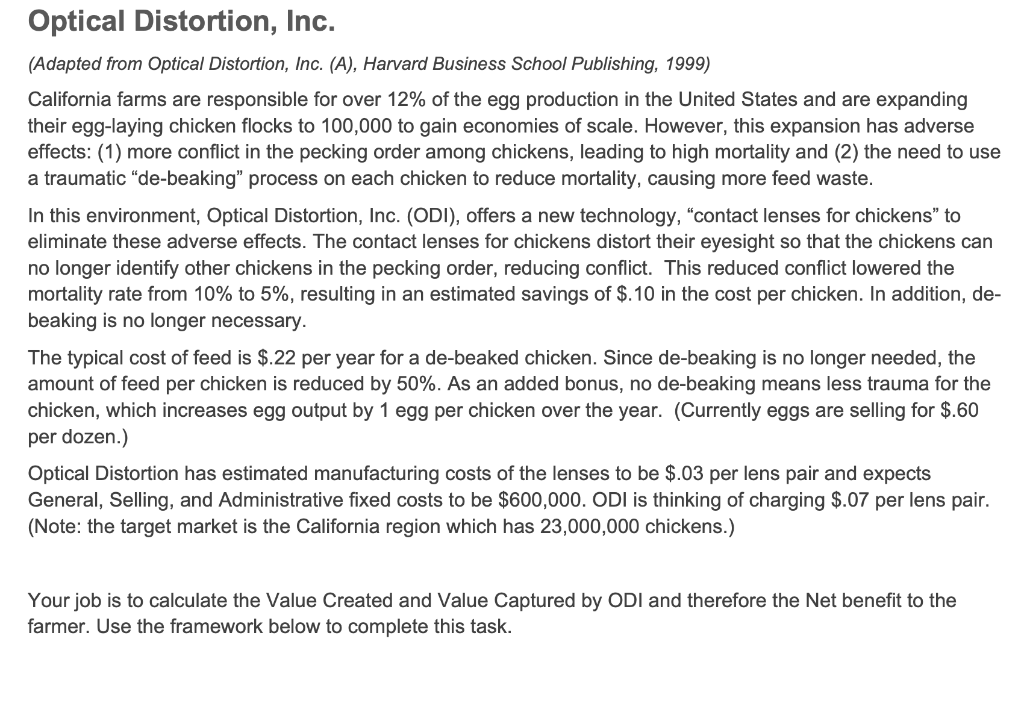


(Adapted from Optical Distortion, Inc. (A), Harvard Business School Publishing, 1999) California farms are responsible for over 12% of the egg production in the United States and are expanding their egg-laying chicken flocks to 100,000 to gain economies of scale. However, this expansion has adverse effects: (1) more conflict in the pecking order among chickens, leading to high mortality and (2) the need to use a traumatic "de-beaking" process on each chicken to reduce mortality, causing more feed waste. In this environment, Optical Distortion, Inc. (ODI), offers a new technology, "contact lenses for chickens" to eliminate these adverse effects. The contact lenses for chickens distort their eyesight so that the chickens can no longer identify other chickens in the pecking order, reducing conflict. This reduced conflict lowered the mortality rate from 10% to 5%, resulting in an estimated savings of $.10 in the cost per chicken. In addition, debeaking is no longer necessary. The typical cost of feed is $.22 per year for a de-beaked chicken. Since de-beaking is no longer needed, the amount of feed per chicken is reduced by 50%. As an added bonus, no de-beaking means less trauma for the chicken, which increases egg output by 1 egg per chicken over the year. (Currently eggs are selling for $.60 per dozen.) Optical Distortion has estimated manufacturing costs of the lenses to be $.03 per lens pair and expects General, Selling, and Administrative fixed costs to be $600,000. ODI is thinking of charging $.07 per lens pair. (Note: the target market is the California region which has 23,000,000 chickens.) Your job is to calculate the Value Created and Value Captured by ODI and therefore the Net benefit to the farmer. Use the framework below to complete this task. Based on the ODI scenario, complete Table A by answering items "a" through "e" below: Table A a) Quantify the impact of each annual benefit on a per chicken basis. b) Calculate the financial impact of that benefit (+revenue increase or -cost decrease). c) Sum up the financial benefits (per chicken) to the farmer. d) What is the net benefit (value) of the lenses for a chicken farmer with a flock size of 100,000 chickens? e) What is the break-even point and implied market share









